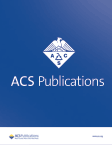摘要 PO3-20-10:病例系列:浸润性分泌性癌
IF 2.9
Q2 PUBLIC, ENVIRONMENTAL & OCCUPATIONAL HEALTH
引用次数: 0
摘要
分泌变异型浸润性导管癌在文献中的描述并不详尽,但却以其独特的组织病理学来定义。这些肿瘤的 S100 染色阳性,通常是激素三阴性癌症,总体预后良好。据推测,成人分泌性癌更具侵袭性,肿瘤复发的可能性更大。我们介绍两例这种罕见组织病理学诊断的病例研究。第一例是一名 76 岁的女性,左侧乳房浸润性导管癌的复发性分泌性变异。第二例是一名 68 岁的男性,患有浸润性和原位分泌性癌。从最初诊断到目前的治疗,我们对所有可用的机构和外部机构记录进行了全面的病历审查。本病例系列总结了背景信息和去标识化的患者信息。患者是一名 76 岁的女性,2011 年因可触及左侧乳房和腋窝肿块就诊。她的检查结果显示左侧乳房有 2.3 厘米长的ER+/PR+/HER2-浸润性导管癌,并伴有 1.5 厘米长的恶性腋窝淋巴结。她接受了左乳肿块切除术和腋窝清扫术。她接受了全乳房辅助放射治疗和腋窝结节放射治疗,并接受了为期 5 年的阿那曲唑治疗。七年后,她发现左侧乳房上部复发。核磁共振成像引导下的活检显示左侧乳腺癌复发,病理结果为浸润性导管癌,分泌型。她选择接受单纯肿块切除术。最终病理结果显示为浸润性导管癌,分泌型,ER阴性(0%),PR阴性(0%),HER2阴性(0%),pT1bNx。她接受了加速辅助部分乳腺放射治疗。两年后,通过双侧乳房磁共振成像进行随访和监测,发现左侧乳房新肿块,为三阴性、复发性分泌变异型浸润性导管癌。她接受了左侧保乳切除术、右侧前哨淋巴结活检和背阔肌皮瓣植入术。最终病理结果显示为多灶复发性分泌性癌,两个病灶的大小分别为 6 毫米和 11 毫米。第二位患者是一名 68 岁的男性,最初因腹部切口疝就诊。在对他进行初步评估时,体格检查发现了一个可触及的乳晕后结节。随后的乳房 X 光检查显示,该肿块为低回声肿块,边缘不规则,大小为 2.8 x 2.3 x 1.7 厘米,伴有血管增多和钙化。超声引导活检显示为浸润性分泌性癌。肿瘤的初步病理检测显示ER阳性(5%)、PR阳性(1%)和HER2阴性。患者被送入手术室进行了全乳切除术,并进行了前哨淋巴结活检。术后病理结果显示:边缘阴性,浸润性分泌癌,淋巴结转移阴性。浸润性导管癌的分泌型变异非常罕见,这是由其独特的免疫组化特征决定的。我们介绍了本院的两例分泌性癌病例。数据显示,分泌型乳腺癌患者的局部复发率较高,占 33-44% 的病例。Ki-67 指数已被用作疾病转移和复发的预后指标。目前的治疗方案多种多样,但以手术治疗为主。本报告显示,尽管该病病情轻微,但多发和复发的可能性是存在的。鉴于有关这种亚型癌症的数据有限,有必要进行更多调查,以说明辅助治疗方案的有效性。病例 1 --插入图片--组织病理学检查(200 倍)显示为浸润性癌,伴有致密的嗜酸性分泌物。通过免疫组化检查,细胞ER(0%)和PR(0%)阴性,HER2Neu评分为0,支持浸润性分泌癌的诊断。病例 2--插入图象--200 倍组织病理学检查显示浸润性癌伴有致密的嗜酸性分泌物。肿瘤细胞的 CK5/6(斑片状)、CD117、ER(局灶性弱)和 S100 阳性;p63 和 calponin 阴性,支持浸润性分泌癌的诊断。荧光原位杂交(FISH)检测到 NTRK3 基因重排。引用格式:Lauren Geisel, Hemanth Venkatesh, Alyssa Obermiller, Quyen Chu, Jessica Gielow, Danielle Henry.病例系列:侵袭性分泌性癌[摘要]。在:2023 年圣安东尼奥乳腺癌研讨会论文集;2023 年 12 月 5-9 日;德克萨斯州圣安东尼奥。费城(宾夕法尼亚州):AACR; Cancer Res 2024;84(9 Suppl):Abstract nr PO3-20-10.本文章由计算机程序翻译,如有差异,请以英文原文为准。
Abstract PO3-20-10: Case Series: Invasive Secretory Carcinoma
Secretory variant invasive ductal carcinoma is not well described in the literature but is defined by its unique histopathology. These tumors stain positive for S100 and are typically triple negative hormonal cancers with an overall good prognosis. There is speculation that secretory carcinoma in adults is more aggressive with a greater likelihood for tumor recurrence. We present two case studies of this rare histopathologic diagnosis. First, a 76-year-old female with a recurrent secretory variant, invasive ductal carcinoma of the left breast. Second, a 68-year-old male who presented with invasive and in situ secretory carcinoma.
A thorough chart review of all available institutional and outside institution records was performed from initial diagnosis to current treatment. Background information and de-identified patient information was summarized for this case series.
This is a 76-year-old female who presented to her physician in 2011 with a palpable left breast and axillary mass. Her workup demonstrated ER+/PR+/HER2- invasive ductal carcinoma with lobular features of the left breast measuring 2.3 cm, along with a 1.5 cm malignant axillary lymph node. She underwent a left breast lumpectomy with axillary dissection. She underwent adjuvant whole breast radiation, axillary nodal radiation, and was placed on anastrozole therapy for 5 years. Seven years later a recurrence was noted in the superior aspect of the left breast. MRI guided biopsy revealed recurrent left breast cancer with pathology of invasive ductal carcinoma, secretory variant. She elected to undergo lumpectomy alone. Final pathology demonstrated invasive ductal carcinoma, secretory variant, ER negative (0%), PR negative (0%), HER2 negative (0%), pT1bNx. She underwent accelerated adjuvant partial breast radiation. Follow up and surveillance with bilateral breast MRI two years later demonstrated a new left breast mass, found to be triple negative, recurrent secretory variant invasive ductal carcinoma. She underwent definitive treatment with a left skin sparing mastectomy, right sentinel lymph node biopsy, and a latissimus dorsi flap with implant placement. Final pathology demonstrated multifocal recurrent secretory carcinoma, two foci measuring 6 and 11 mm.
Our second patient was a 68-year-old male who initially presented to the clinic for evaluation of a ventral incisional hernia. During his initial assessment, a palpable retro-areolar nodule was noted on physical exam. Subsequent mammography demonstrated a hypoechoic mass with irregular margins measuring 2.8 x 2.3 x 1.7 cm along with increased vascularity and calcifications. An ultrasound guided biopsy demonstrated invasive secretory carcinoma. Initial pathologic testing of the tumor demonstrated ER positive (5%), PR positive (1%), and HER2 negative. The patient was taken to the operating room for a total mastectomy with sentinel lymph node biopsy. His postoperative pathology demonstrated negative margins, and invasive secretory carcinoma with lymph nodes negative for metastatic disease.
Secretory variant of invasive ductal carcinoma is rare and is determined by its unique immunohistochemical features. We present two cases of secretory carcinoma at our institution. Data suggests that local recurrence is common in patients with secretory breast cancer, occurring in 33-44% of cases. Ki-67 index has been used as a prognostic indicator for metastases and recurrence of disease. Current treatment regimens are diverse; however, surgery is favored as the primary method. This report shows that although indolent, multifocality and recurrence is plausible. Given the limited data on this subset of carcinoma, more investigation is warranted to describe the effectiveness of adjuvant treatment options.
Case 1
–insert figure image–
Histopathologic examination at 200x shows invasive carcinoma with dense eosinophilic secretory material. By immunohistochemistry, the cells are negative for ER (0%) and PR (0%) with a HER2Neu score of 0, supporting the diagnosis of invasive secretory carcinoma.
Case 2
–insert figure image–
Histopathologic examination at 200x shows invasive carcinoma with dense eosinophilic secretory material. The tumor cells are positive for CK5/6 (patchy), CD117, ER (focal and weakly), and S100; negative for p63 and calponin, supporting the diagnosis of invasive secretory carcinoma. NTRK3 gene rearrangement was detected on fluorescence in situ hybridization (FISH).
Citation Format: Lauren Geisel, Hemanth Venkatesh, Alyssa Obermiller, Quyen Chu, Jessica Gielow, Danielle Henry. Case Series: Invasive Secretory Carcinoma [abstract]. In: Proceedings of the 2023 San Antonio Breast Cancer Symposium; 2023 Dec 5-9; San Antonio, TX. Philadelphia (PA): AACR; Cancer Res 2024;84(9 Suppl):Abstract nr PO3-20-10.
求助全文
通过发布文献求助,成功后即可免费获取论文全文。
去求助
来源期刊

ACS Chemical Health & Safety
PUBLIC, ENVIRONMENTAL & OCCUPATIONAL HEALTH-
CiteScore
3.10
自引率
20.00%
发文量
63
期刊介绍:
The Journal of Chemical Health and Safety focuses on news, information, and ideas relating to issues and advances in chemical health and safety. The Journal of Chemical Health and Safety covers up-to-the minute, in-depth views of safety issues ranging from OSHA and EPA regulations to the safe handling of hazardous waste, from the latest innovations in effective chemical hygiene practices to the courts'' most recent rulings on safety-related lawsuits. The Journal of Chemical Health and Safety presents real-world information that health, safety and environmental professionals and others responsible for the safety of their workplaces can put to use right away, identifying potential and developing safety concerns before they do real harm.
 求助内容:
求助内容: 应助结果提醒方式:
应助结果提醒方式:


